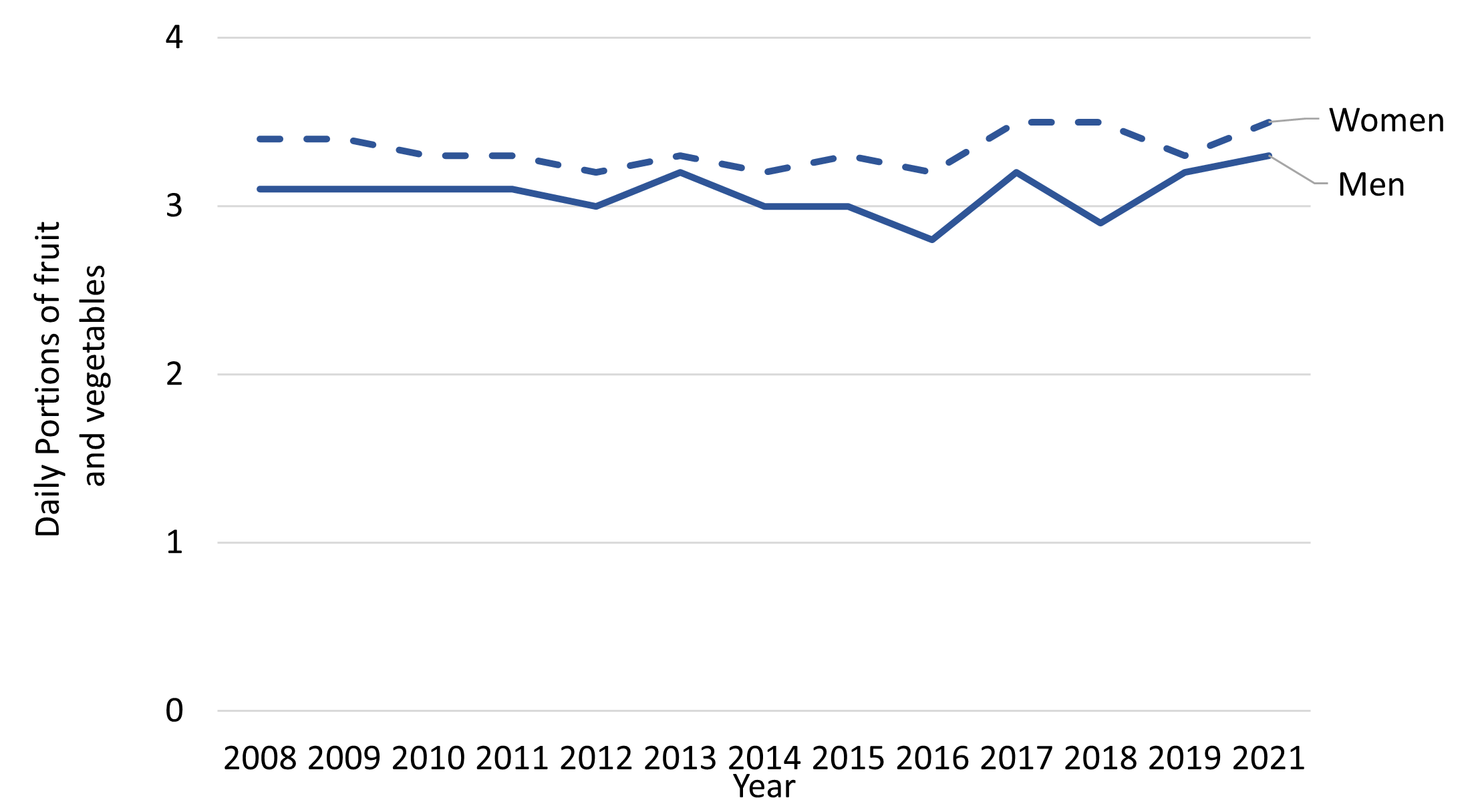Diet & Weight - Data
Consultations
Diet and weight
Body Mass Index (BMI) is used for working out the health of populations rather than individuals:
- Underweight - BMI is less than 18
- Overweight - BMI is 25 to 30
- Obese - BMI is 30 to 40
- Morbidly obese - BMI is 40+
Health conditions associated with being overweight include:
- type 2 diabetes
- heart disease
- stroke
- osteoarthritis
- fatty liver disease
- kidney disease
- issues with infertility in women
- some forms of cancer
Health conditions associated with being underweight include:
- weakened immune system
- osteoporosis
- anaemia
- issues with fertility in woman
- palpitations
How many people are overweight
Over half (58%) of the Lothian's population is estimated to be overweight. This is compared to 65% of Scotland's population.
Around a quarter (24%) of adults in Midlothian are obese and more than a third (34%) are overweight. This is lower than the Scottish averages with 29% of the adult population being obese and 36% overweight.
Diet
The World Health Organisation recommends adults eat at least 5 varied portions (80g per portion) of fruit and vegetables a day as part of a balanced diet.
Scotland
- Sex - More women (33%) said they ate at least 5 portions a day than men (25%). This proportion has remained relatively stable since 2003 (Scottish Health Survey - Lothian 2016-2019).
Midlothian
- 29% of respondent’s reported eating at least 5 portions fruits and vegetables the day before the study. 71% of the respondents reported eating below the recommended portions of fruits and vegetables. Almost one third of the respondents reported to eating 4 portions and 40% reported to eating 3 portions or less (Midlothian Community Planning Partnership Citizen Panel (2017-2018)
Mean daily portions of fruit and vegetables consumed by sex (Scotland)
Data source: The Scottish Health Survey
Note - Data for 2020 is not included as not directly comparable with previous years

Nationally most adults show a good understanding of the key principles of a healthy diet but there is a gap between attitudes and behaviour. 1 in 10 people are worried about the amount of sugar in food. They are also concerned about saturated fat, fat, and salt.
The barriers most cited to achieving a healthy diet are cost and time. 78% of people agree that we need to make significant changes to how we eat to be healthier.
Our food environment plays an important role in shaping what people buy and eat, and it is influenced by what is available, affordable and accessible. Inequalities in accessing a healthy diet contribute towards health inequalities (Public Health Scotland, 2023).
In 2019, 9% of adults in Scotland reported having experienced food insecurity in terms of worrying that they would run out of food due to lack of money or resources during the previous 12 months, the same proportion as in 2018 (Scottish Health Survey, 2019).
Food insecurity
Food insecurity is the inability to acquire or consume an adequate quality or enough food in socially acceptable ways, or the uncertainty that one will be able to do so.
The 2021 Scottish Health Survey asked three questions around food insecurity in Scotland.
- Percentage of people worried about running out of food (last 12 months) due to a lack of money or resources:
- 9% of adults;
- 14% of younger adults aged 16-44
- 1% in the 65+ age group.
- No significant difference observed between men and women.
- Percentage of people who ate less than they think they should have due to lack of money or other resources:
- 6% of adults;
- 12% for 25-44 age group;
- 4% for 45-64 age group;
- 1% in both 65+ age groups.
- Percentage of people who had run out of food:
- 3% of adults;
- 5% of those aged 16-64
- 0% of those 65+
Increased energy bills are also contributing to food insecurity.
In June 2023 the Trussell Trust published a report on Hunger in the UK. Some of the headline findings of the report are:
- 69% of people referred to food banks in the Trussell Trust are disabled, compared to 26% across the general population.
- Working aged people are overrepresented among those referred to food banks in the Trussell Trust network.
- The majority of people (89%) referred to food banks in the network are in receipt of means tested benefits.
- 46% of people referred to food banks in the network live in social housing.
Page updated: June 2024
